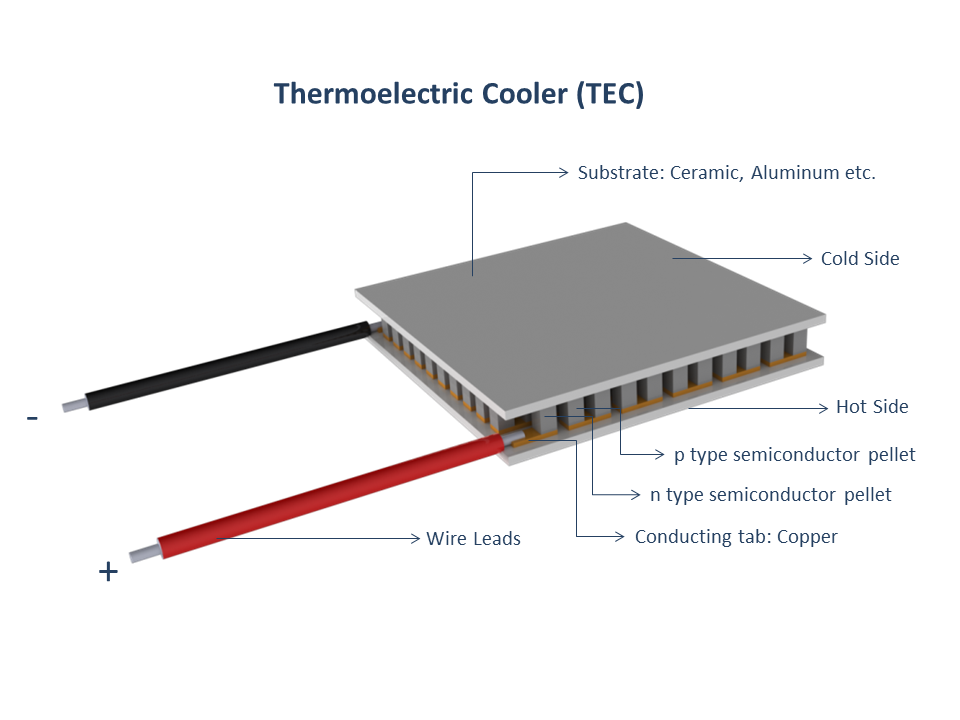Since i'm using a peltier cooling module for my mini fridge project. I have done a research on what is peltier module and it's working principle.
Thermoelectric Cooling :

Thermoelectric cooling uses the Peltier effect to create a heat flux between the junction of two different types of materials. A Peltier cooler, heater, or thermoelectric heat pump is a solid-state active heat pump which transfers heat from one side of the device to the other, with consumption of electrical energy, depending on the direction of the current. Such an instrument is also called a Peltier device, Peltier heat pump, solid state refrigerator, or thermoelectric cooler (TEC). It can be used either for heating or for cooling, although in practice the main application is cooling. It can also be used as a temperature controller that either heats or cools.
This technology is far less commonly applied to refrigeration than vapour-compression refrigeration is. The primary advantages of a Peltier cooler compared to a vapour-compression refrigerator are its lack of moving parts or circulating the liquid, very long life, invulnerability to leaks, small size, and flexible shape. Its main disadvantages are high cost and poor power efficiency. Many researchers and companies are trying to develop Peltier coolers that are cheap and efficient.
Working Principle :
Thermoelectric coolers operate by the Peltier effect (which also goes by the more general name thermoelectric effect). The device has two sides, and when a DC electric current flows through the device, it brings heat from one side to the other, so that one side gets cooler while the other gets hotter. The "hot" side is attached to a heat sink so that it remains at ambient temperature, while the cool side goes below room temperature. In some applications, multiple coolers can be cascaded together for lower temperature.

Construction :
Two unique semiconductors, one n-type and one p-type, are used because they need to have different electron densities. The semiconductors are placed thermally in parallel to each other and electrically in series and then joined with a thermally conducting plate on each side. When a voltage is applied to the free ends of the two semiconductors there is a flow of DC current across the junction of the semiconductors causing a temperature difference. The side with the cooling plate absorbs heat which is then moved to the other side of the device where the heat sink is. Thermoelectric Coolers, also abbreviated to TECs are typically connected side by side and sandwiched between two ceramic plates. The cooling ability of the total unit is then proportional to the number of TECs in it.
Some benefits of using a TEC are:
- No moving parts so maintenance is required less frequently
- No chlorofluorocarbons (CFC)
- Temperature control to within fractions of a degree can be maintained
- Flexible shape (form factor); in particular, they can have a very small size
- Can be used in environments that are smaller or more severe than conventional refrigeration
- Long life, with mean time between failures (MTBF) exceeding 100,000 hours
- Controllable via changing the input voltage/current
Some disadvantages of using a TEC are:
- Only a limited amount of heat flux is able to be dissipated
- Relegated to applications with low heat flux
- Not as efficient, in terms of coefficient of performance, as vapour-compression systems